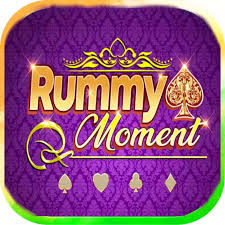Rummy Movement refers to the strategic decisions and actions players make throughout a game of rummy to achieve their objectives. This article explores the fundamentals of Rummy Movement, its strategic implications, and essential tips to enhance your gameplay.
What is Rummy Movement?
Rummy Movement encompasses the tactical decisions and actions players take during a game of rummy to form valid sets and sequences, reduce points, and ultimately declare their hand. It involves several key aspects, including card drawing, discarding, and melding, each playing a crucial role in shaping the course of gameplay.
Key Elements of Rummy Movement
- Drawing Cards: At the start of their turn, players draw a card from the stock pile or the discard pile. This decision is pivotal as it determines the cards available for melding or discarding.
- Melding Sets and Sequences: Players aim to arrange their cards into valid sets (three or four cards of the same rank) and sequences (three or more consecutive cards of the same suit). The ability to meld efficiently depends on the cards drawn and discarded by opponents.
- Discarding Cards: After drawing a card, players must strategically discard one from their hand. The choice of which card to discard is influenced by minimizing points, disrupting opponents’ strategies, and advancing towards completing melds.
Strategic Implications of Rummy Movement
- Sequence Prioritization: Early focus on forming pure sequences (sequences without jokers) enhances the likelihood of an early declaration, reducing penalty points.
- Card Counting and Probability: Advanced players often track discarded cards and calculate probabilities to anticipate which cards are still in play, aiding decision-making in drawing and discarding.
- Opponent Observation: Observing opponents’ discards and gameplay patterns helps in deducing their hand compositions and adjusting strategies accordingly.
Tips to Enhance Your Rummy Movement
- Plan Ahead: Formulate a strategy at the beginning of the game based on your initial hand and the first few discards. Adjust this strategy as the game progresses and new cards are drawn.
- Use Jokers Wisely: Incorporate jokers strategically to complete sequences or sets, maximizing their utility to expedite gameplay.
- Be Flexible: Adapt your strategy based on the cards drawn, opponents’ discards, and the evolving dynamics of the game. Flexibility is key to navigating unexpected situations.
- Minimize Points: Aim to minimize points in your hand by discarding high-value cards early and focusing on completing melds swiftly to declare.
Conclusion
Rummy Movement plays a crucial role in determining the outcome of a game by shaping players’ decisions and actions towards achieving victory. By mastering the art of drawing, discarding, and melding cards strategically, players can enhance their chances of success in rummy. Embrace the tactical nuances, refine your strategies, and enjoy the dynamic gameplay that Rummy Movement offers in every thrilling session of this classic card game.




